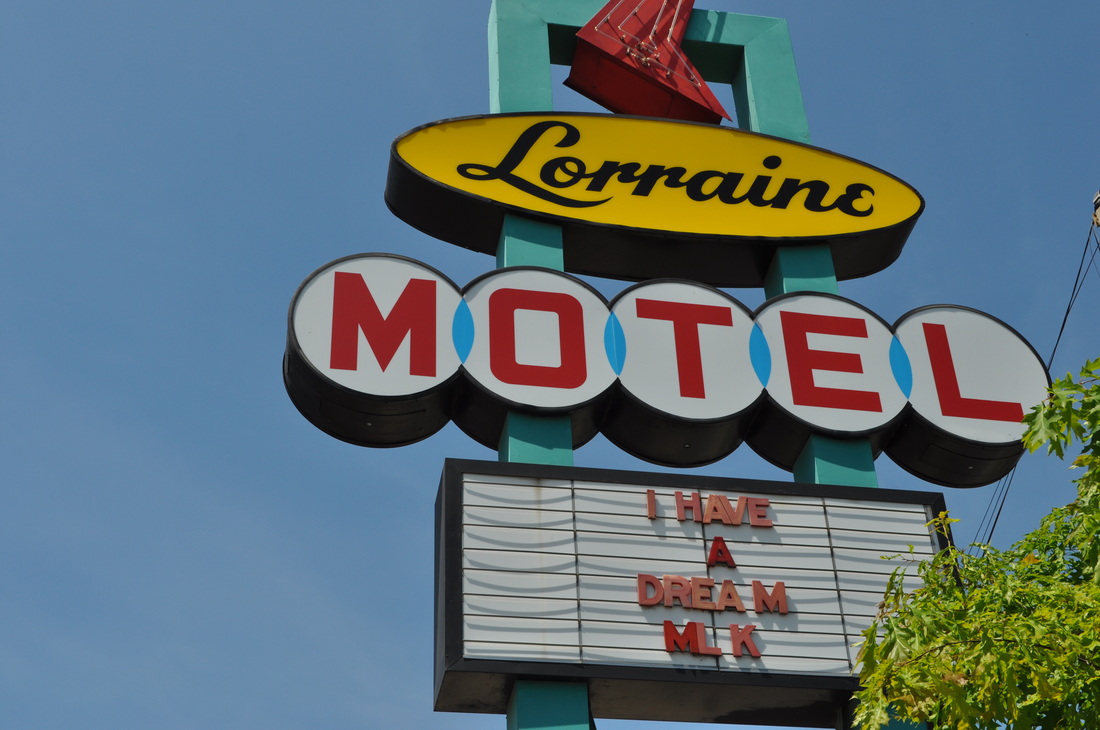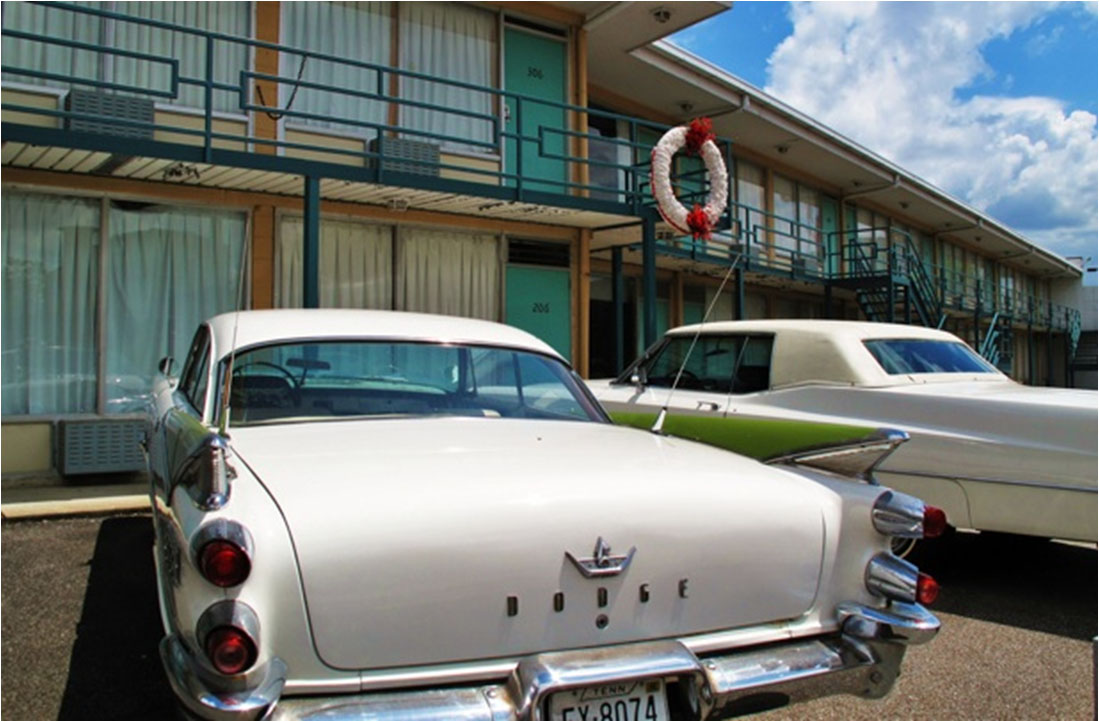Originally built for white railroad passengers in 1920, the 16-room Windsor Lorraine Hotel was built on the northern side of this site. Local African American Walter Bailey purchased the hotel in 1945, renamed it for his wife Loree, and expanded it to include the second floor.
The Lorraine ultimately became an African American establishment during the days of segregation, catering to music legends such as Cab Calloway, Count Basie, Ray Charles, Lionel Hampton, Nat King Cole, Otis Redding, The Staple Singers and Aretha Franklin.
While in Memphis for the 1968 Sanitation Workers Strike, Dr. Martin Luther King was fatally shot on the balcony outside room 306 at the Lorraine. The wreath marks the place where Dr. King drew his last breath. Bailey's wife Loree suffered a stroke just hours after the assassination and died 5 days later.
Following the hotel's foreclosure in 1982, an effort to raise funds called "Save the Lorraine" bought the hotel for $144,000 at auction. Had one of the other 2 bidders won, the hotel would have been razed. The Lorraine closed as a motel in 1988 when sherriff's deputies evicted the last holdout tenant, Jacqueline Smith, to turn the hotel into an $8.8 million National Civil Rights Museum. (Jackie, who had lived at the hotel since 1973, maintained a vigil outside of the museum for 21 hours a day 25 years.)
The National Civil Rights Museum officially opened in 1991, and expanded the museum in 2002 to include the Young and Morrow building and Founders' Park in front of the Museum.
Today the museum is completing a $25 million renovation and expansion project.
Take a quick video tour of the National Civil Rights Museum
| Click here for the complete tour of south Main |
|
|
| Please contact us if you notice something incorrect or missing from this page at getdown@downtownmemphis.com or 901.575.0561 |



